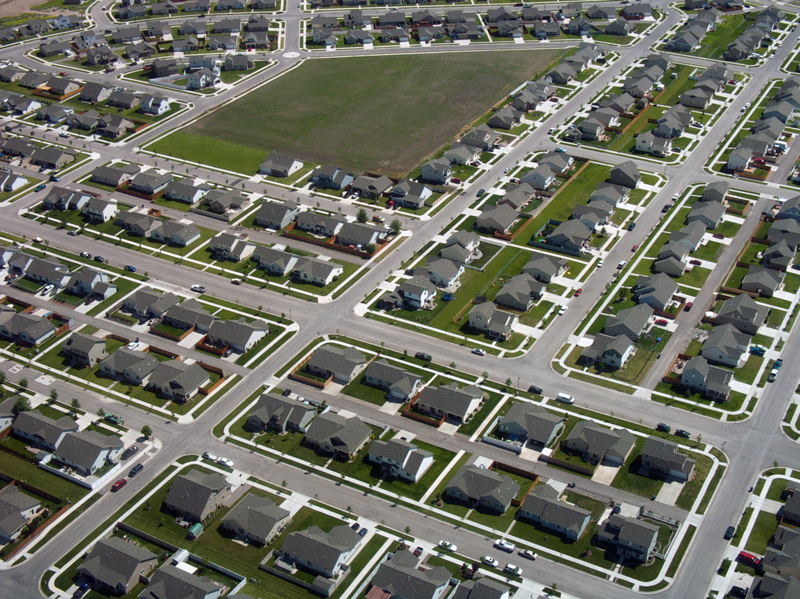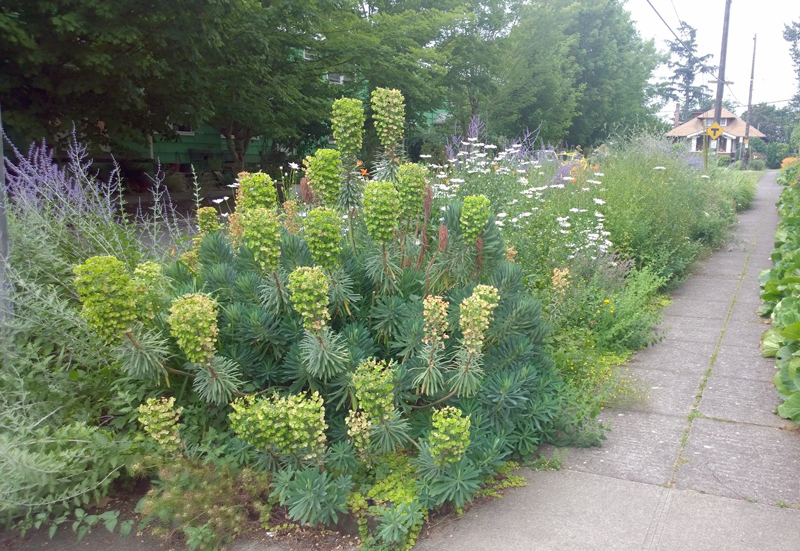Loss of habitat is one of the biggest issues contributing to the decline of pollinators. With the loss of prairies, forests, and other natural areas to development and agricultural use, pollinators are having a harder time finding the resources they need.
While a backyard butterfly garden will never be a substitute for acres of prairie, even small-scale gardens, thoughtfully planted and protected from pesticides, scattered amongst homes and businesses, can add up to meaningful habitat. While it may seem contrary to commonly held beliefs, recent research suggests that pollinators do better in urban environments, where they are protected from the types of pesticides and monocultures that degrade habitat in agricultural areas.

Perhaps you have a corner of your yard planted with wildflowers, but otherwise live amongst a sea of lawn. Maybe you have a small yard, or no yard at all. It’s time to get creative about where to plant for pollinators.
In Your Neighborhood
You might be crazy for coneflower and bonkers for black-eyed susan, but your neighbors may love their lawn. Convincing them to enrich even a small amount of their landscape with pollinator plantings can have a sizeable impact. You can perhaps woo them with “gifts” from your garden in the form of divisions, or collect seed in fall and start some “baby” plants for their yard.
Taking it one step further, you may be able to engage with your homeowner or neighborhood association to find like-minded individuals who are willing to add to the community pollinator patchwork.
Mail-order nurseries often offer discounts on plants when buying in bulk or purchasing full flats of single species. Consider starting a native plant buyer’s club where you can meet with neighbors to ooh and aah over plant catalogs, placing a single order, sharing the shipping costs, and divvying up the plants.
Thinking Beyond the Backyard
In many areas, the strip of lawn between the sidewalk and the street—sometimes referred to as the “hellstrip”—may be an unexplored or perhaps the only place to garden. In many parts of the country a movement is growing to use these spaces to plant for pollinators, linking areas of habitat in the community.
Other areas of unexplored potential may include parking medians, municipal properties, public planters, or areas in front of post offices – all of which need maintaining. Frequently, local volunteers or land stewardship groups come together to manage these spaces. In State College, PA for example, members of the Western Pennsylvania Conservancy maintain plantings in a garden bed along a busy roadside while volunteers can sign-up with the city to maintain rain gardens and street plantings. Both present opportunities for advocating for pollinator friendly plantings in public spaces.

Spaces that you may not think of as habitat such as scruffy undeveloped lots, disturbed spaces between buildings, and areas along roadsides, may often be vital to protecting pollinators in the urban landscape. While these spaces may seem void of any resources, aggressive native and non-native plant species are often first to move into these spaces, thriving in tiny cracks and compacted soils. These “weeds” often provide valuable sources of pollen and nectar. It’s also important to note that 70% of native bee species are ground nesting, tunnelling into bare earth like ants. In our overly manicured urban and suburban landscapes, where every inch of land may be covered in lawn or mulch, paved or painted – undeveloped or disturbed land may provide the best, and sometimes only access to bare ground. Protecting these spaces from pesticide use and clearing trash and debris can help maintain these habitats while beautifying the neighborhood.
As we carve up the landscape with roads, parking lots, housing and lawns – habitat becomes fragmented. Bees, butterflies, and other pollinators don’t need large patches to live in, and the fact that they can fly means they can move easily from one patch to another. Filling in the gaps throughout the urban and suburban landscape can sustain this biodiversity, and create corridors back to nature.



